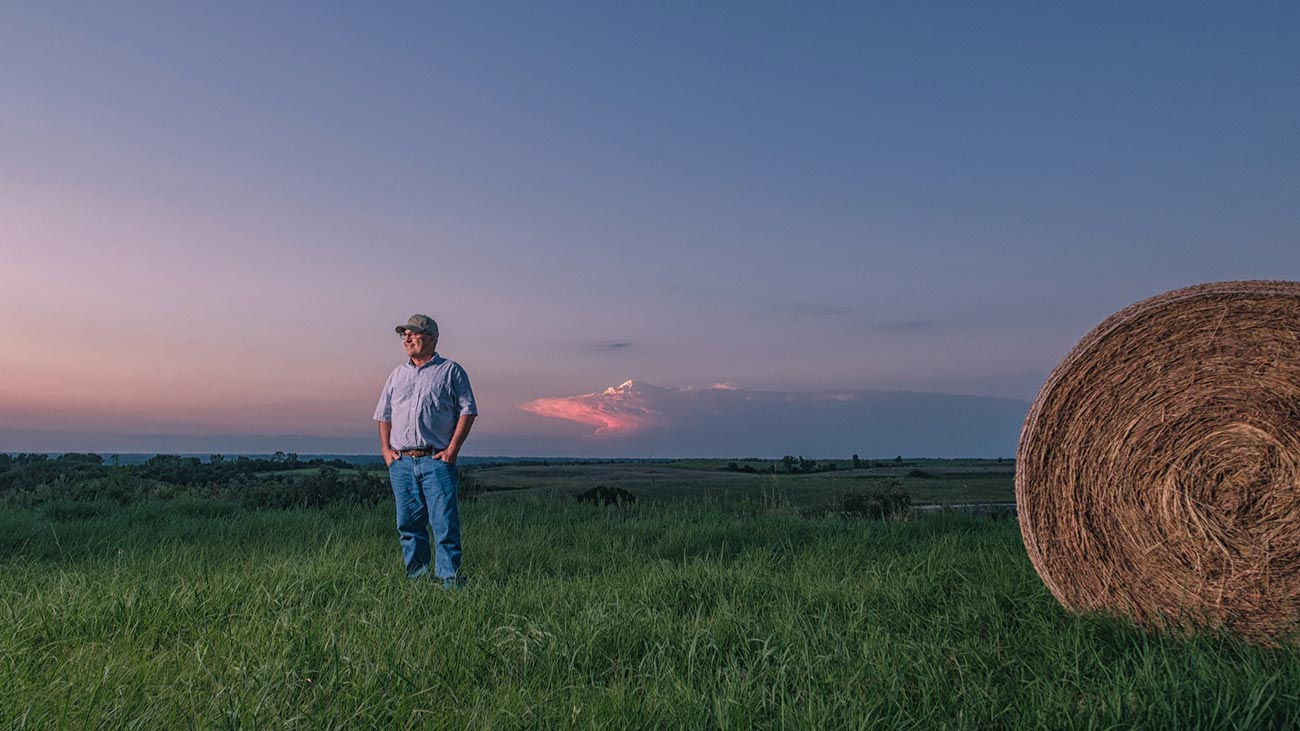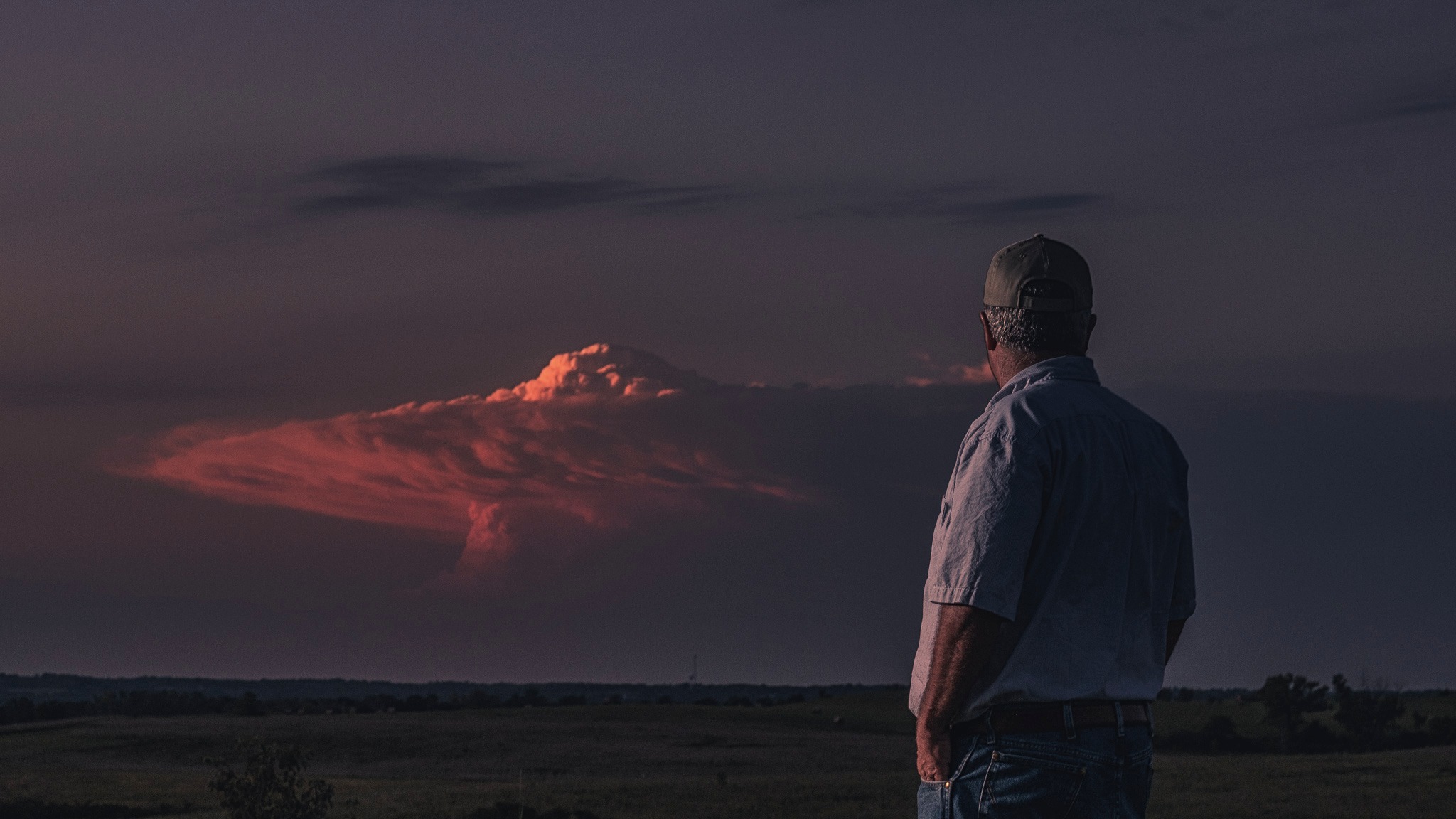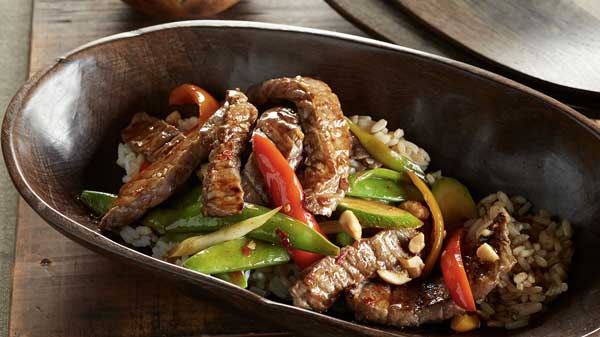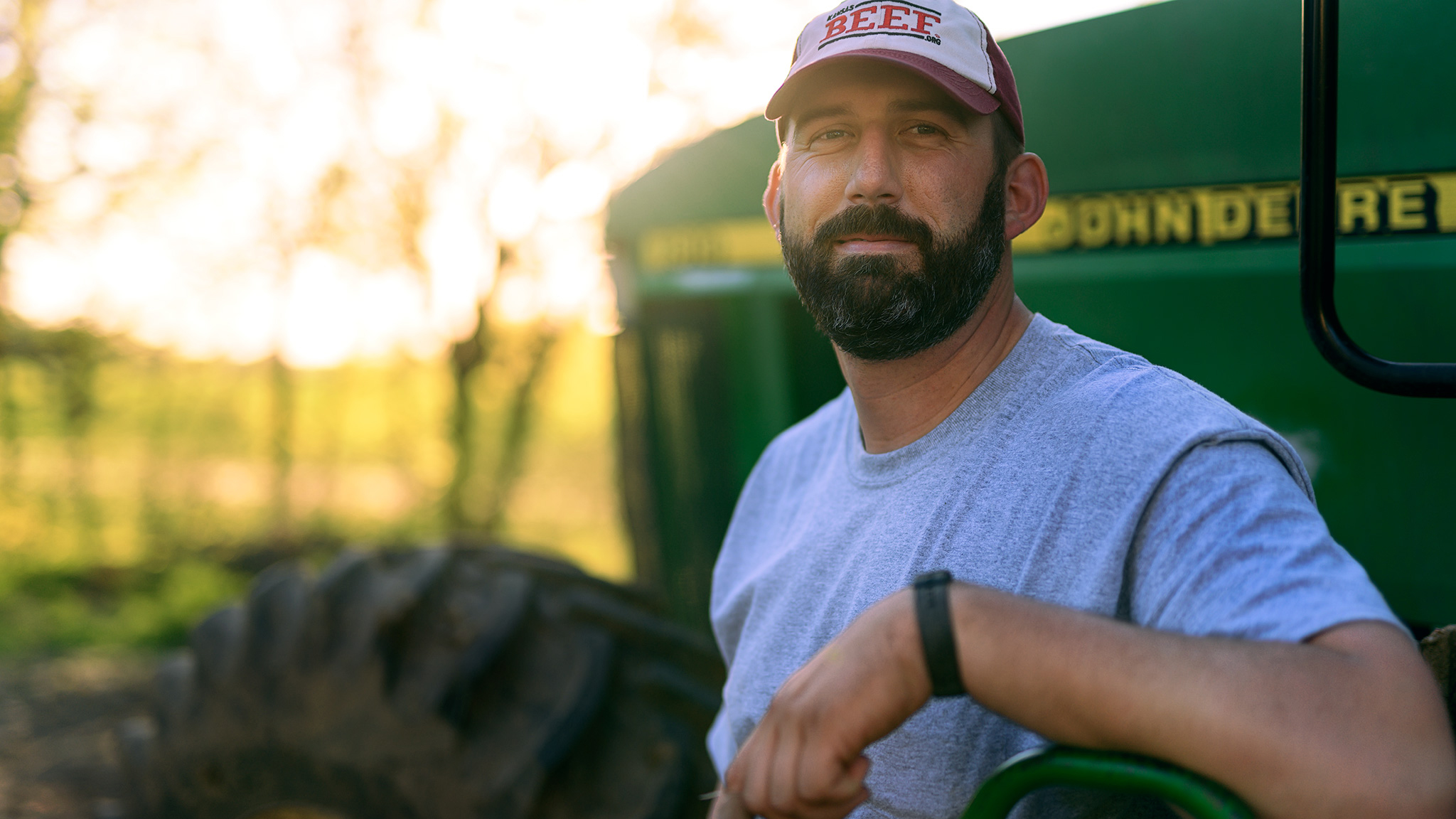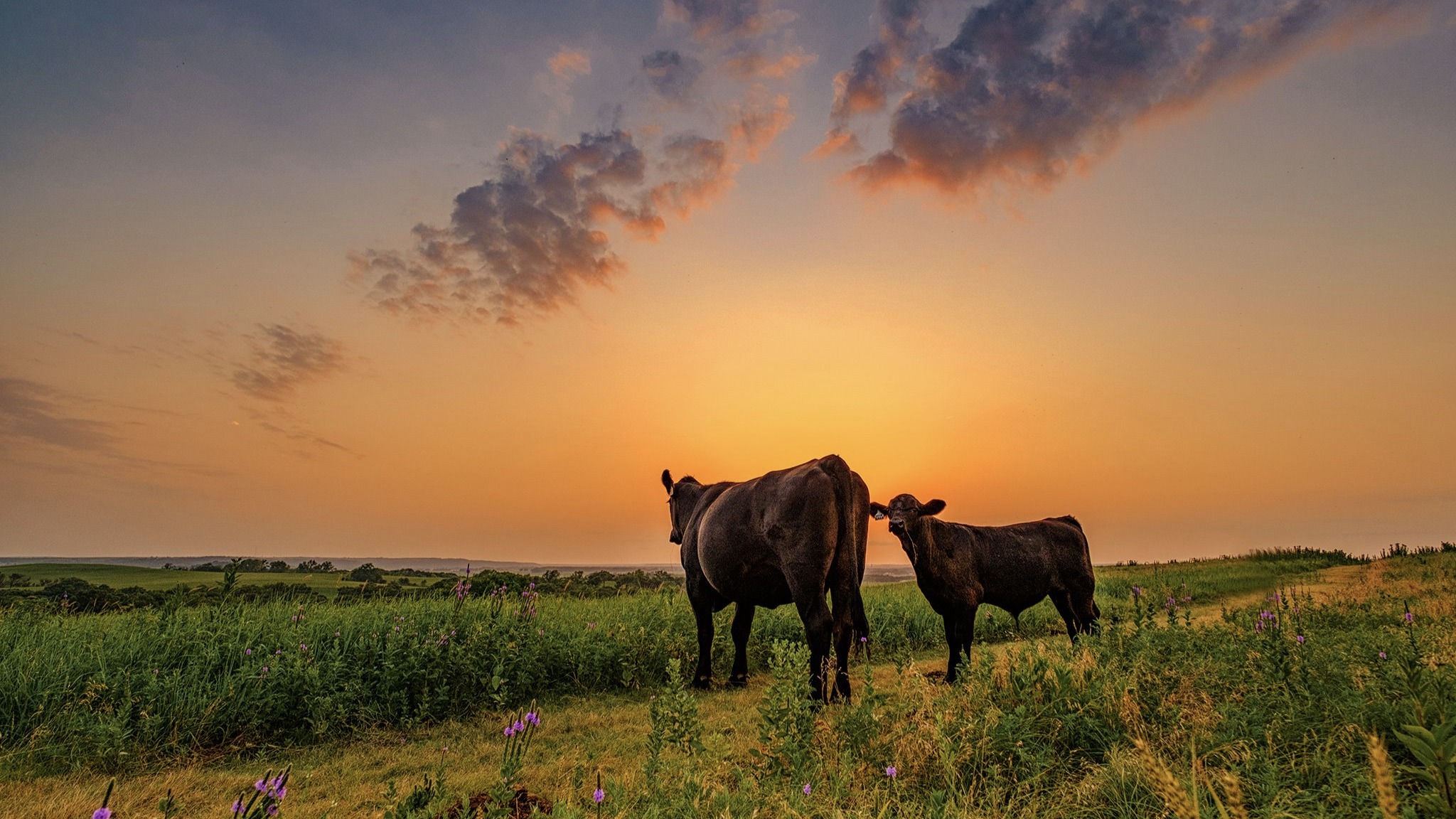
How do you graze cattle and keep the land healthy at the same time?
"Back when I was in college, a professor went through examples of over stocking (putting too many cattle) on a pasture and how it affected the weights of the cattle. You have to stock your pastures at the right levels, levels the land can sustain. I'll look at the grass and keep track of the number of days and animal units that are running on it. It's a combination of calculations and what the grass looks like on a pasture-by-pasture basis. If you keep the grass and soil healthy, it's not only better for the grass but you'll also be more efficient."
Why are the Flint Hills a perfect place for cattle production?
"You can't plant crops on this land. That's why it's still in native grass and was never tilled. The topsoil is so shallow and there's so many layers of limestone just beneath the surface. The only food this land can produce is beef. The chances are if you see cows grazing in the Flint Hills it's because you can't farm it. "
A partner for Sustainability
Some cattle ranchers will rent pastures so they can graze more cows and not over stress the land. Joe rents one set of pasture that is part of a quarry. Since the top soil in the Flint Hills is so shallow and filled with limestone, the land on some of these pastures can't be tilled for crops. Since there are copious amounts of limestone in this region, quarries can mine the limestone for essential development needs in Kansas. Part of Kansas state law is for quarries to replenish old sites by filling in with dirt, top soil, and reseeding the surface. Essentially, the old quarry site must be restored back to its original state. Joe has been working with a local quarry to help restore old mine sites that have been excavated.
An award for conservation and sustainability
While Joe runs cattle on his family's own pastures, he does rent land from a current quarry site. Joe and his family ranch, in partnership with the quarry, won a county conservation award for his stewardship of of this rented pasture and dedication to improving the native grasses. He has spent years reseeding the newly covered topsoil with native grasses and often uses the forage to feed his cattle. He plans to introduce cattle to the land this coming spring so livestock can be responsibly grazing the abundant grasslands of the Flint Hills.
Cattle graze the grass-filled pastures of the River Creek Farms ranch. The quarry site that Joe is helping to reseed is in the distance.
What does responsible grazing mean to you?
"Responsible grazing to me means being in balance with the land. You can't over graze it. To keep that balance with the land, you need to let the pastures rest and build up its root reserves. We will rotate cattle to different pastures to let the grass rest."
What's one of your favorite things about being out on the pastures with your cattle?
"You have to love your job. I get to have the best views. To see the cows come up to you when you call them is a pretty amazing site. We handle our cattle in a low-stress way and their behavior shows it. When we're around them, they're not stressed. They're calm."
What is your favorite beef recipe?
| My wife makes the best BBQ meatballs. Here is the recipe:
Mix above ingredients, shape into 1 1/2 inch balls. Pat into 9 x 13 baking dish.
Pour over meatballs and bake at 350 degrees for 1 hour. | |
